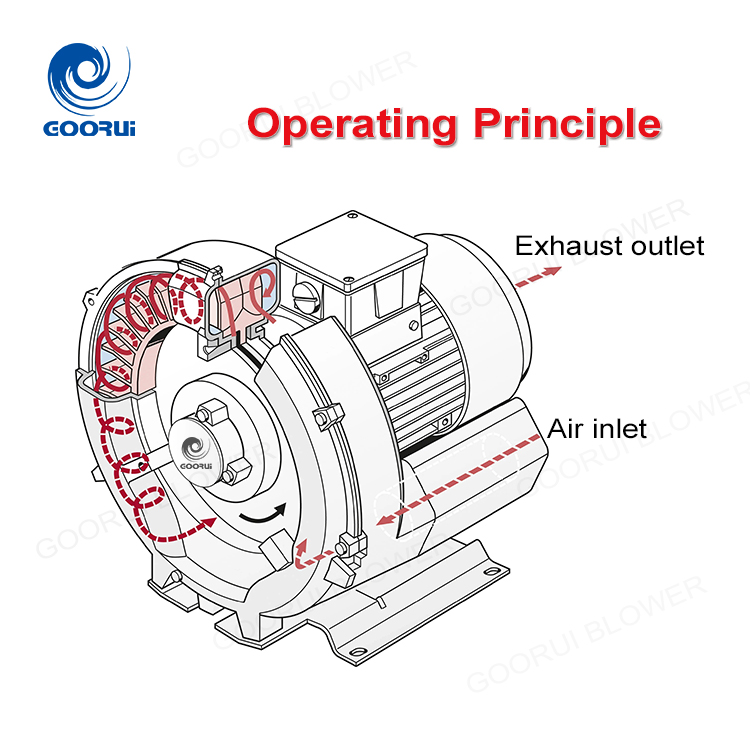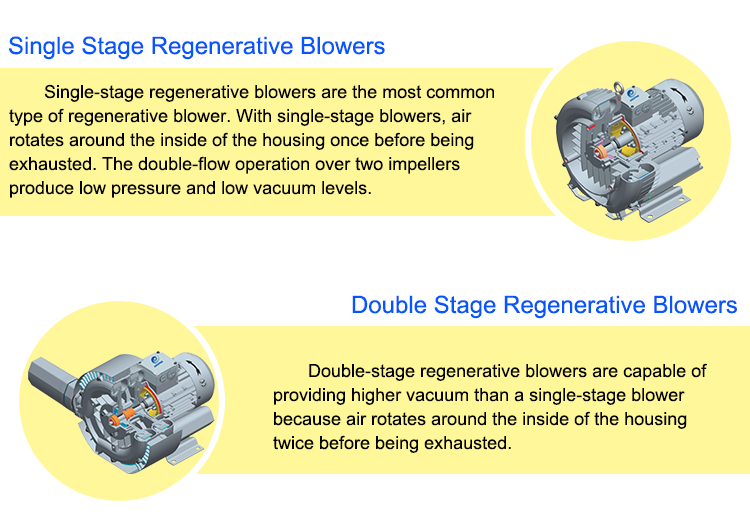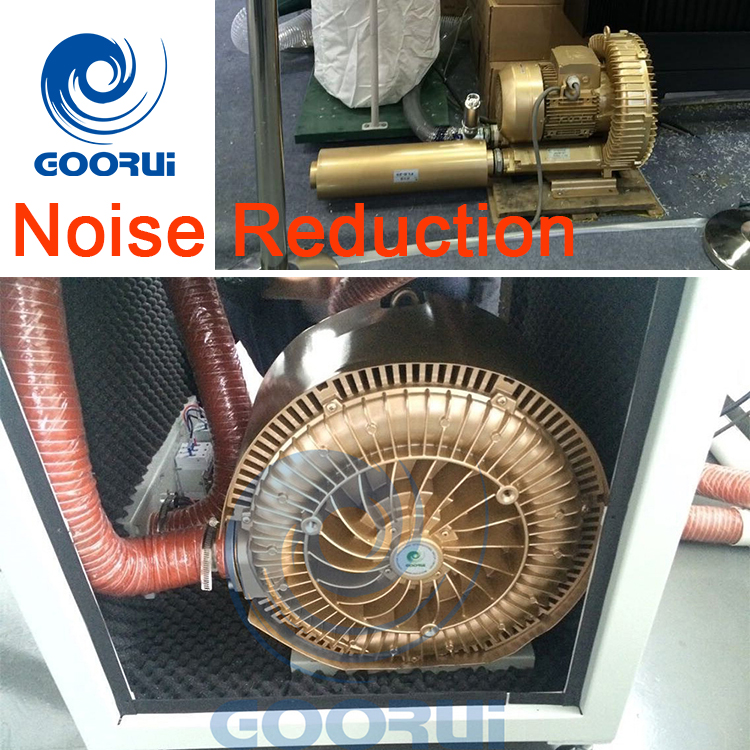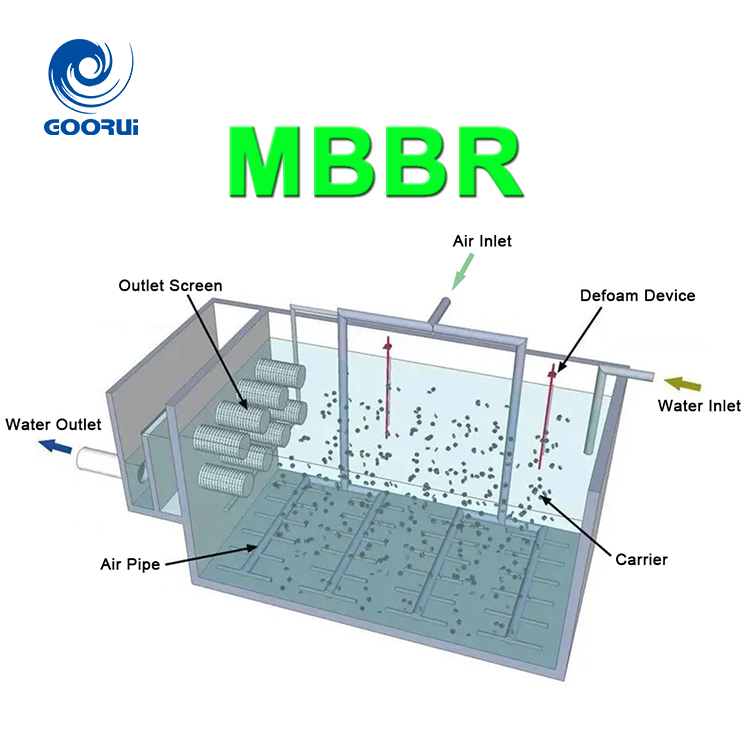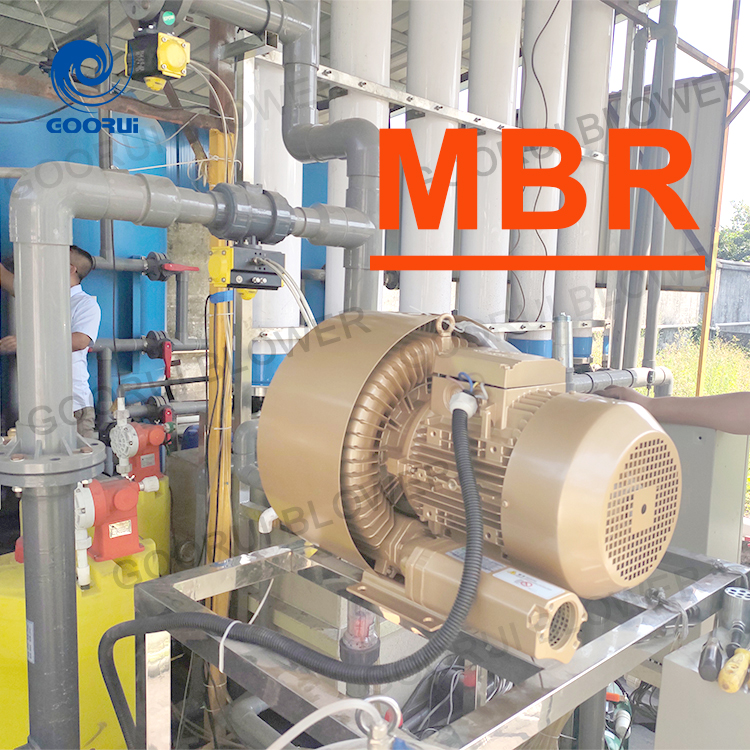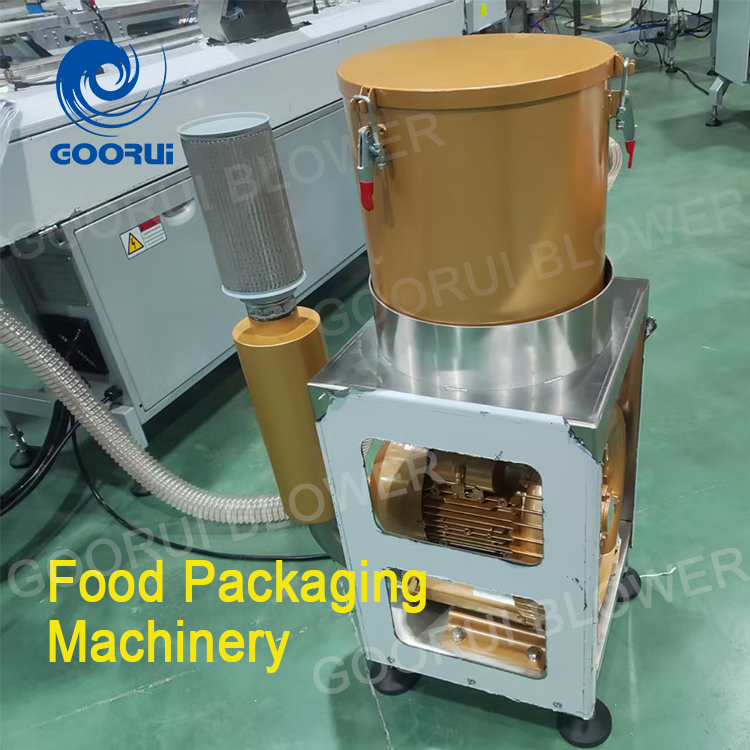Regenerative blowers use a rotating impeller to accelerate air around a channel (or side channel) within the blower housing. This process regenerates the airflow multiple times, increasing the pressure and airflow.
Single-stage and two-stage regenerative blowers differ primarily in how they handle airflow to create pressure. Single-stage blowers pass air through the impeller once, while two-stage blowers redirect the air for a second pass, resulting in higher pressure and vacuum capabilities.
Single-Stage Regenerative Blowers:
Function:
Air flows through the blower housing and impeller only once before being exhausted.
Pressure/Vacuum:
Offer moderate pressure and vacuum levels, but generally lower than two-stage.
Flow Rate:
Typically provide higher flow rates compared to two-stage blowers.
Applications:
Well-suited for applications where air volume is more important than high pressure, such as aeration, pneumatic conveying, and some industrial processes.
Two-Stage Regenerative Blowers:
Function:
Air is channeled back around the impeller for a second rotation before being exhausted.
Pressure/Vacuum:
Deliver significantly higher pressure and vacuum capabilities.
Flow Rate:
Offer lower flow rates compared to single-stage blowers for the same size and power.
Applications:
Ideal for applications requiring higher pressure or vacuum, such as certain types of industrial equipment, medical devices, and some cleaning systems.
In essence:
·Single-stage: More flow, moderate pressure.
·Two-stage: Higher pressure and vacuum, but lower flow.
The choice between single-stage and two-stage regenerative blowers depends on the specific requirements of the application, with higher pressure needs favoring two-stage and higher volume needs favoring single-stage.


